About the Idaho Long-Range Rifle Class
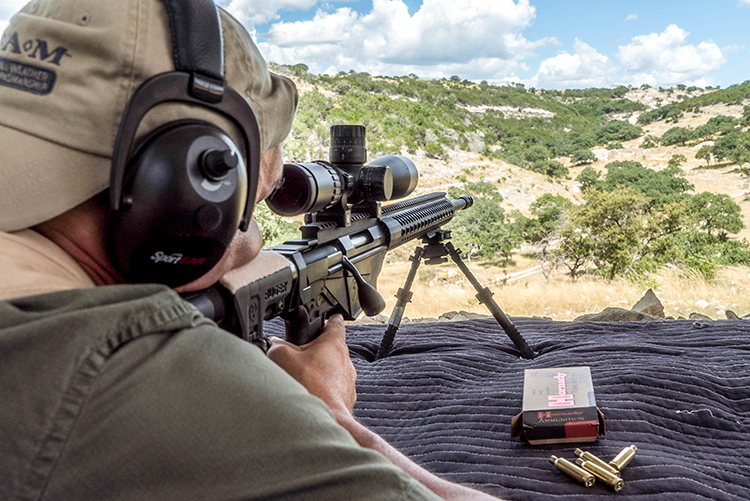
The Idaho Long-range Rifle Class is designed to teach the core essentials of long-range rifle concepts. The class focuses on long-distance shooting, sighting rifle scopes, and Minutes of Angles (MOA) to reach targets at a far distance.
A precision scoped rifle is essential to perform as expected when shooting longer distances.
There are a wide variety of scopes available for a rifle. The key is to determine what scope will be used, and what purpose it will fill, then match the correct scope to your rifle.
Remember that you will likely need more scopes to match the intended usage of other rifles. Yes, it gets expensive!
Mandatory equipment for this class is a precision rifle with a scope capable of MOA accuracy with a bi-pod and leather or nylon adjustable sling. Your scope will need to have tactical turrets for adjusting your scope’s Elevation and Windage settings using a MIL Dot-type reticle.
The rifle can be bolt-action, semi-automatic, or gas-driven. Rifles that require manual cocking, such as lever-action and pump-action, are prohibited. The largest caliber you can shoot in this class is a .300 Winchester Magnum.
This class requires that you are in good physical condition to walk and carry all of your equipment if necessary. You must also get up and down from the ground safely without assistance.
What is all that Technical Rifle Jargon About?
Rifles are more than long guns. They are precision-made instruments that allow the shooter to hit their target at a distance. As with many early-on inventions, it’s difficult to determine when the first rifle was commercially made. Research indicates the first manufactured rifle was available as early as 1440, developed by Gaspard Kollner. Some rifle enthusiasts believe Koller had a co-partner, Augustus Kotter, which remains somewhat elusive when trying to determine the true beginnings of manufactured rifles.
Advancement in Rifle Technology
Like any tool, the rifle has received much attention from enthusiasts to improve the rifle’s and the shooter’s performance. As a result, many tools have surfaced to enhance rifle shooting accuracy and overall experience. Like many add-on inventions, some have survived the length of time while others have faded into history.
Rifle Scope – MOA Accuracy
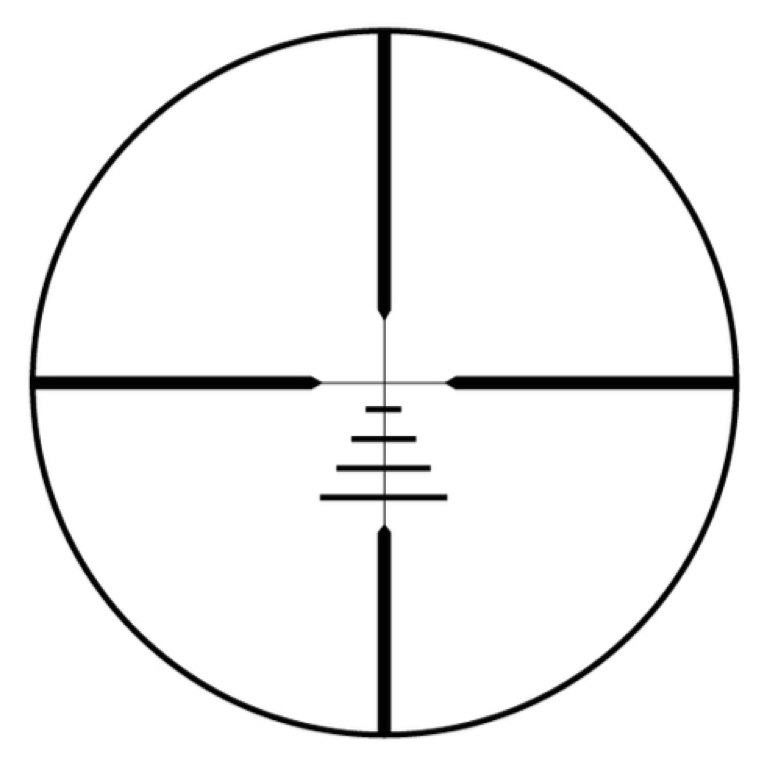
MOA or “Minute of Angle”, is a unit of angular measurement. In simple terms, it measures accuracy at .036″ per 100 yards. Think of a protractor. A protractor measures angles in degrees. For example, if we were to ask you to draw a 90-degree line, it would look very similar to an “L” shape, where the two lines intersect is called a “vertex”. Pictured to the right is known as a “MIL Dot” scope which allows shooters to determine and adjust for distances quickly. Rifle scopes have other types of reticles or “Crosshair” sights you can choose from depending on their intended usage.
Rifle Scope – Tactical Turrets
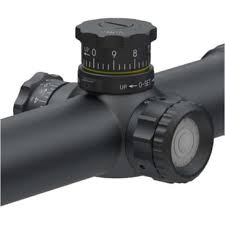
Tactical Turrets are those fancy-looking knobs attached to a rifle scope. Tactical turrets provide settings that quickly and easily allow you to adjust your point of impact when engaging targets at a distance.
You will find tactical turrets on rifle scopes designed specifically for long-range shooting. Most scopes will have two turrets by default however, on higher-end scopes, there will be three.
Turrets allow you to adjust for “Windage”, the direction in the projectile is traveling, either left or right, as it is affected by the wind. The other turret allows you to adjust for “Elevation”, which allows you to adjust your reticle to properly reflect the height of the projectile as it is traveling toward a target.
Turrets are adjusted by turning their appropriate knobs up and down or left to right. Turrets generally allow an audible click each time it hits a 1/4 MOA adjustment. When adjusting for elevation or windage, one-click generally equates to the one-quarter minute of angle adjustment necessary and is usually written as 1/4 MOA.
On higher-end rifle scopes, there’s a knob to adjust for parallax, which is the apparent movement of the target as it relates to the retile when you move your eye away from the exact center point of the eyepiece. This occurs when the target’s image is not on the same optical plane as the scope’s reticle, resulting in a shift in your point of aim.
Rifle Bipods
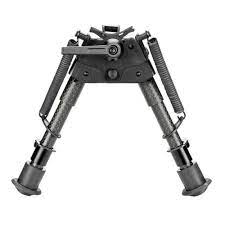
Bipods allow the rifle shooter to provide a forward rest on the rifle barrel while reducing the movement that can occur when taking a long-distance shot.
Bipods, as the name implies, have two legs, sometimes adjustable, to allow rifle shooters to rest their rifles on supporting objects and when shooting from the prone position. Objects such as a wall, a rifle bench, and even on the ground relieve eye fatigue while allowing for increased accuracy and stability when taking the shot.
This is A Two day Class!
Why is this a 2-day course? Our Idaho Rifle Essentials 103 Class is the best training you will receive in Idaho, there are no shortcuts in learning how to properly own and use a rifle responsibly. This course introduces many new concepts to the beginner rifle student, concepts that cannot be rushed through during the training process.
We train using Modern Gun Training Techniques, ensuring you will know everything you need to know by the end of class. We want you to be completely trained when handling a firearm.
Indoor ranges in Idaho do not accommodate outside instructors, which makes no sense – we are bringing them, customers! We have chosen to utilize one of the several outdoor ranges in the Treasure Valley that we like bring customers to their range. Indoor ranges are loud, really loud. It is very difficult to hear the instructor while training, and they are extremely restrictive with what we can teach.
Outdoor ranges provide freedom of teaching without the loud distraction you experience when training in an indoor range. We can take our time training defensive tactics – there’s no rush – you’re not paying a lot of money per hour, students can hear us, there are little to no distractions, and there’s no need to rush you through the skill-building portion the class. You learn in a safe, comfortable, and fairly quiet environment.
Outdoor ranges are extremely hot or cold in the late afternoons, distracting new students from concentrating. By shooting early the following day, students are fresh and ready to train for their new shooting skills.
This class requires that you are in good physical condition to walk and carry all of your equipment if necessary. You must also be able to get up and down from the ground safely without assistance.
This Course is for Bolt-action, Semi-automatic,
or Gas-driven Rifles Only
Prerequisites:
- Idaho Rifle Essentials 102 or Equivalent
- Idaho Enhanced Concealed Carry Permit, or
- Idaho Standard Concealed Carry Permit, or
- Proof of Current Active Military, or
- Official Background Check provided by a state or federal agency within the past 90 days.
Adherence to the primary safety rules must always be followed.
- Keep the Firearm Pointed in a Safe Direction.
- Keep the Firearm Unloaded Until Ready to Use.
- Keep Your Finger Off The Trigger Until Ready to Shoot.
- Know Your Target and Beyond.
- No Drugs, Alcohol, nor Cannabis are Allowed At The Range.
Equipment:
Day 1: Classroom – Saturday
- Notepads, pens, paper.
- Bolt-Action, Semi-automatic, or Gas-Driven Rifle chambered for .22 LR, .22 WIN MAG, .222, .243 WIN, .270 WIN, 7MM REM Mag, .30-30, .30-06, .300 SAV, .300 H&H, .308 WIN, .338, .35 REM or .45-70 GOVT.
- It is preferred you bring the rifle you intend to use for precision/long-range shooting.
- Note: For future reference, the Idaho Precision Rifle 101 Course will only accept .222, .243, .270 7MM MAG, 30-06, 300 SAV, 300 H&H, .308, and .338 claibur rifles.
- Rifle Scope capable of MOA accuracy.
- Tactical Turrets: Your scope must have 1/4 click adjustable turrets.
- Rifle Spotting Scope
- Rifle Bipod.
- Two-Point Rifle Sling.
- Rifle Case for transporting your rifle.
- MINIMUM 3-Magazines.
- Training Cartridges (Dummy Rounds): At least 5 Training Cartridges in the correct caliber are needed for this class.
- Don’t forget, if you have two different caliber guns, you will need two different-sized training cartridges.
- Can be found at local sporting goods stores or online. Purchase ahead of the class, so you have what you need – this is not a last-minute purchase item.
- Bring your ARKSight Dry Fire Training Cartridges from your Idaho Rifle Essentials 102 Course – you will need them for rifle calibration exercises. (available on Amazon – order your correct caliber).
- Rifle Cleaning Kit – everything you need to properly clean your rifle. Brushes, patches, bore cleaner, gun oil.
Estimated Length: 6 Hours
Day 2: Range Day – Sunday
- Bolt-Action, Semi-automatic, or Gas-Driven Rifle chambered for 22 LR, .22 WIN MAG, .222, .243 WIN, .270 WIN, 7MM REM Mag, .30-30, .30-06, .300 SAV, .300 H&H, .308 WIN, .338, .35 REM or .45-70 GOVT.
- It is preferred you bring the rifle you intend to use for precision/long-range shooting.
- Note: For future reference, the Idaho Precision Rifle 101 Course will only accept .222, .243 WIN, .270 WIN, 7MM REM MAG, .30-06, .300 SAV, .300 H&H, .308, and .338 claibur rifles.
- Rifle Scope capable of MOA accuracy.
- Tactical Turrets: Your scope must have 1/4 click adjustable turrets.
- Rifle Spotting Scope.
- Rifle Bipod.
- Two-Point Rifle Sling.
- Rifle Case for transporting your rifle.
- MINIMUM 3-Magazines.
- Training Cartridges (Dummy Rounds): At least 5 Training Cartridges in the correct caliber are needed for this class.
- Don’t forget, if you have two different caliber guns, you will need two different-sized training cartridges.
- Can be found at local sporting goods stores or online. Purchase ahead of class, so you have what you need – this is not a last-minute purchase item.
- 100 Rounds Factory Fresh Ammunition
- Use of Reloaded Ammunition will cause immediate failure and expulsion from class.
- Check the weather report on the day of class and bring appropriate clothing.
- Range Fees, if any, are the student’s responsibility and are not included with the course registration.
100 Rounds Factory Fresh Ammunition
Note: Use of reloaded or steel-core ammunition will cause immediate failure, and expulsion from class.
Optional but highly recommended:
- Knee Pads – for range day and private shooting drills afterward.
- Ground Covering for Prone Shooting Positions
- Small Personal Canopy during the summer season when temperatures are expected to be high.
- Folding chair and a small folding table to create your workstation (bench).
Estimated Length: 6 Hours
Opportunities for Additional Training
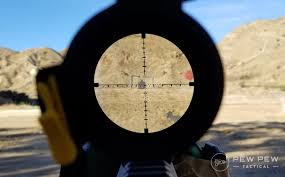
Next in our series of rifle training is the Idaho Defensive Rifle Class 102 (currently under development), which will dive into the technical aspects of rifle shooting.
The class will focus on making long-range rifle shots over 300 feet in length. It will introduce the next level of shooting distances and how to improve your long-distance shooting skills.
